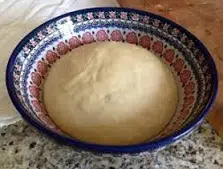The first step we are going to take to know the meaning of the term yeast is to discover its etymological origin. In this case, we can establish that it derives from Latin. Exactly it is the result of the sum of two lexical components of said language:
-The verb “levare”, which can be translated as “elevate” or “raise”.
-The suffix “-ura”, which is used to indicate “result” or “activity”.
A yeast is a type of single-celled fungus that can reproduce by division or budding. Ovoid in shape, yeasts establish chains and generate enzymes that can break down sugars and other organic bodies into simpler substances.
 Yeast is also called the dough formed by these unicellular fungi that has the peculiarity of producing fermentation of the body with which it is mixed. These yeasts are used in the field of baking and confectionery.
Yeast is also called the dough formed by these unicellular fungi that has the peculiarity of producing fermentation of the body with which it is mixed. These yeasts are used in the field of baking and confectionery.
The yeast with the scientific name Saccharomyces cerevisiae is one of the most used for cooking. Depending on its strain, it is possible to distinguish between baker's yeast and brewer's yeast .
This fungus grows anaerobically and causes alcoholic fermentation of carbohydrates , producing ethanol and carbon dioxide in the process. The release of gases causes the dough to grow and become spongy.
When it comes to brewing beer, you have to know that the yeast goes through a fermentation process that takes place in three stages: the so-called adaptation or latency phase, which lasts about 24 hours after the yeast has fermented. inoculated in what is the must; the attenuation phase and, finally, the conditioning phase.
When a person uses yeast to make bread, they are ultimately working with live microscopic fungi. These fungi, upon coming into contact with the sugars and other carbohydrates in the flour and mixing with water , decompose them, causing fermentation that makes the dough grow.
It is important to know that we also talk about baker's yeast, which is what this professional uses to make his bread. However, you must know that within it there are several clearly differentiated types. We are referring to compressed yeast, instant yeast, cream yeast, deactivated yeast, active dried yeast...
It is interesting to know that the origins of yeast as an element to prepare different foods are believed to be found in Ancient Egypt. Specifically, it is believed that it was discovered almost by chance when a mixture of water and flour was left in a mixture of water and flour that fermented more than usual on a hot day.
It should be noted that the so-called chemical yeast , also known as impeller or baking powder , is a chemical product that allows a dough to rise as it releases carbon dioxide. However, it is not a yeast (a fungus ), although it performs the same function.
